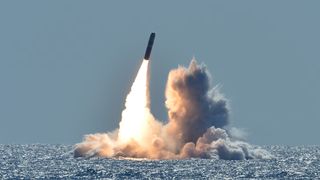Transfixed as the world has been by Trumpian stoushes – public service cuts, tariff wars and berating White House guests – we may have overlooked that the US President has again stated his decades-long-held belief that he could strike a deal to rid the world of nuclear weapons.
Surely not? The very same president who in his first term destroyed his predecessor’s six-party agreement to contain Iran’s nuclear program? And now threatens to bomb Iran?
The same president whose disdain for multilateral organisations raises the spectre of a weakened International Atomic Energy Agency – even as the IAEA continues to ensure the safety of Ukraine’s damaged nuclear energy facilities? And knows intimately the lay-out and potential lethality of North Korea’s unbridled nuclear program?
The same president who has allowed his Department of Government Efficiency to take a wrecking ball to the National Nuclear Security Administration even as its scientists and engineers labour to upgrade the machinery which keeps the US nuclear arsenal safe and secure?
And yet, as American nuclear expert Rose Gottemoeller recently outlined during a visit to Australia and in a speech at the Lowy Institute, a window of opportunity may open amid the global trauma.
Trump has a dim view not only of the threat posed by the possession of nuclear weapons, but also the waste involved in keeping them.
Trump has a dim view not only of the threat posed by the possession of nuclear weapons, but also the waste involved in keeping them. “We’re all spending a lot of money that we could be spending on other things that are actually, hopefully, much more productive,” he said in February soon after returning to office.
As Gottemoeller tells the story, as a 1980s New York real estate magnate, Trump once had the chutzpah to ask Vice President George HW Bush to allow him to negotiate a strategic arms reduction “deal” with Russia.
Gottemoeller was Barack Obama’s Undersecretary for State for Arms Control and International Security, and later NATO Deputy Secretary General. She has deep expertise, having negotiated the last US-Russia nuclear arms limitation treaty known as New START, and an ability to weave through political thickets. That Gottemoeller assesses Trump may try once more to rid the world of nukes is worth paying close attention to. Trump failed during his first term to seriously engage with Russia on a nuclear control treaty (New START expires in 2026), or to influence his “friend” North Korean leader Kim Jong-un whose arsenal has grown exponentially. Neither did Trump find an alternative to Obama’s Iran nuclear deal. But the point is that he took a personal interest in each.
Trump may try again. But he would do so in the face of a belligerent Putin who has threatened to drop a nuclear bomb on Ukraine – the likes of which had not been heard since the Cuban missile crisis. In addition, by 2035, China may have 1500 nuclear warheads with world-class delivery systems – missiles, bomber aircraft and submarines – according to US estimates.
Gottemoeller has a proposal to see talks with Russia advance. It may ultimately fall short of complete denuclearisation but her logic and methodical approach – resting on deep layers knowledge and experience negotiating with the Russians – is compelling:
- The “nuclear triumvirate” of the United States, Russia and China could work on parallel tracks to advance nuclear reductions (US and Russia) and secure “measures of nuclear control” (China).
- The US and Russia would publicly assure the world they will continue to abide by New START’s deployed nuclear warhead cap of around 1,550 each, and 800 delivery vehicles each.
- Meanwhile over the decade – such negotiations will take years – China’s total arsenal could be within reach of 1500 nuclear warheads, deployed and not deployed.
The three would thus be closer to parity, although US and Russian arsenals, comprising deployed and non-deployed warheads and delivery vehicles, would be greater – thus continuing to provide the strategic equilibrium achieved under successive bilateral arms limitation treaties since the height of the Cold War when their stockpiles measured over 32,000 for the US and 46,000 for Russia.
Russia and the United States have led global verification work for decades but confidence among other allies and partners increases with transparency in this meticulous process.
The accounting, reductions and limitations of warheads and delivery systems must entail verification that the countries concerned have done what they have promised. Russia and the United States have led global verification work for decades but confidence among other allies and partners increases with transparency in this meticulous process. Although others are unlikely to invited to join in, the actions of Russia and the US could generate conditions for China – with state media previously asserting that its nuclear silos visible from space were in fact “windmills” – to deduce that the time has arrived to be more transparent and reiterate its adherence to adequate controls.
Talks on a New START replacement treaty could also be possible after in parallel with a process to halt the war in Ukraine.
Achieving these steps would send an electric current through the world of nuclear watchers. Commentary in Europe, Japan and South Korea is growing along lines previously unthinkable – that their countries should build their own nuclear weapons to fill any void opening in the US extended nuclear deterrent guarantee to its allies. The triumvirate would put paid to murmurings by other countries with nuclear weapons that they need to further build their arsenals.
Idealist hopes are not a feature of this plan. Values and morality are not the refrain. Rather, Gottemoeller is offering a tough appraisal of each of the three countries’ fundamental interests. The critical point is that the US, Russia and China all adhere to the belief that nuclear weapons pose an existential threat to humanity.






